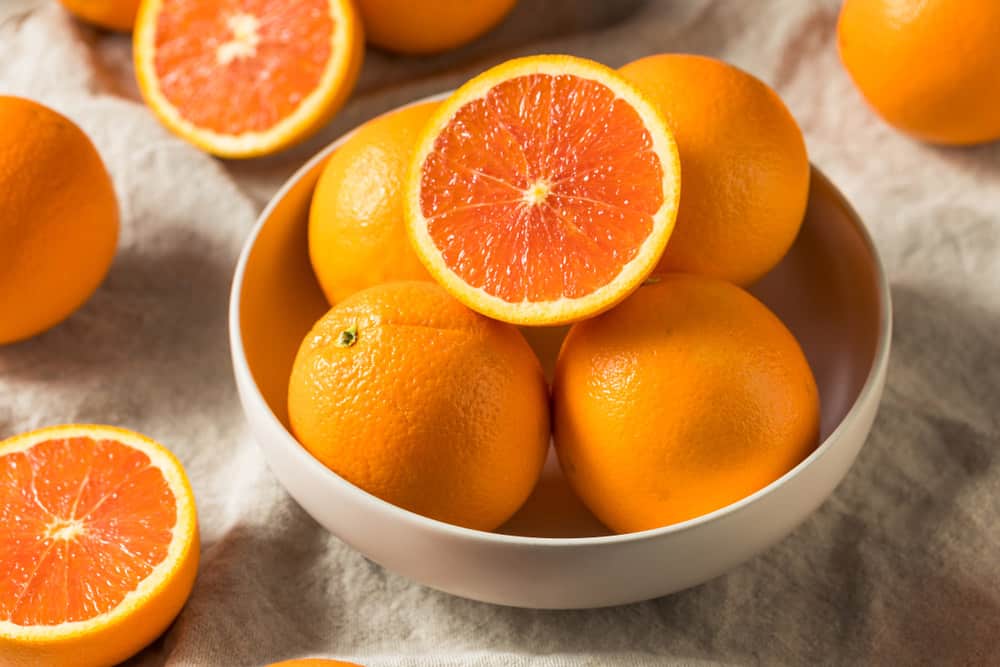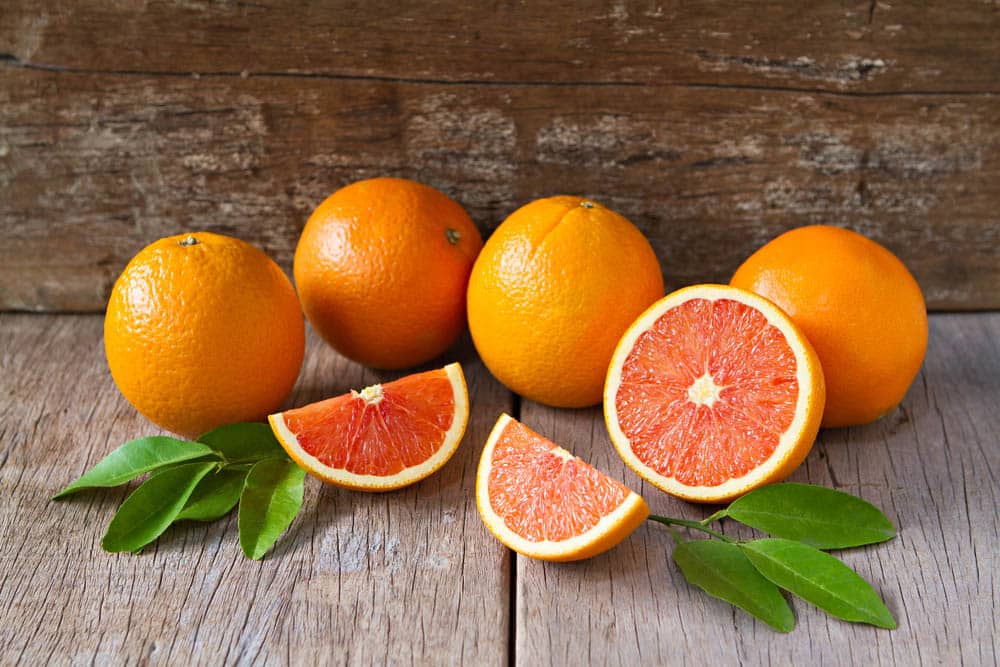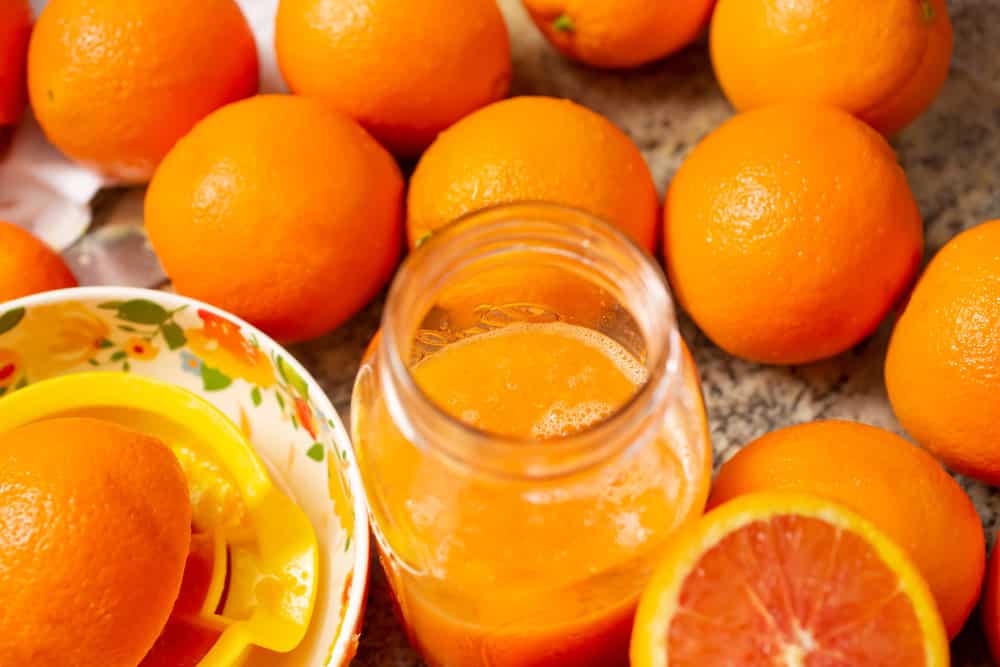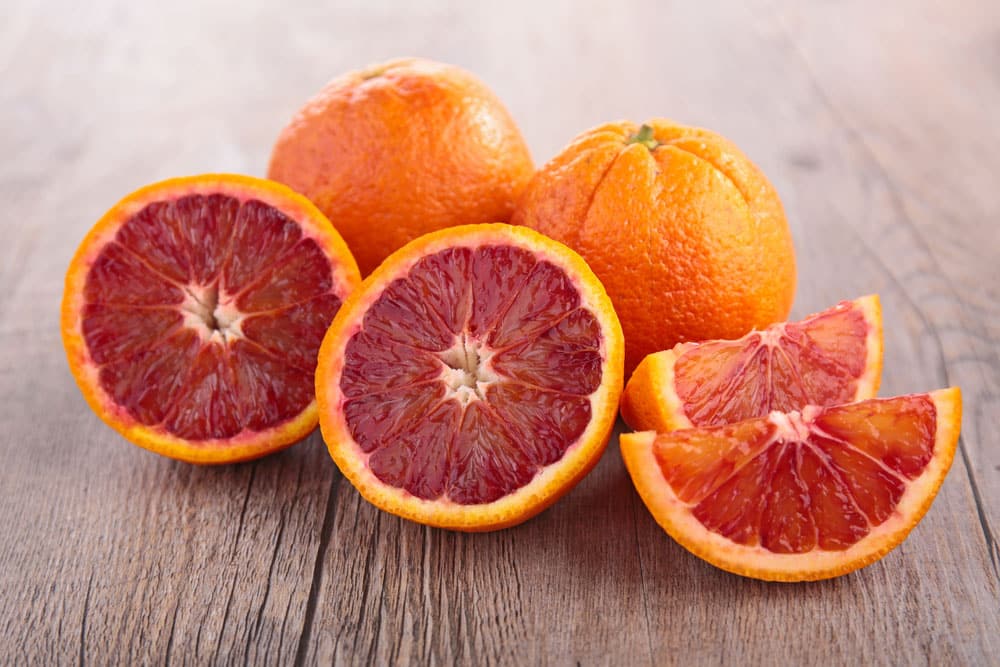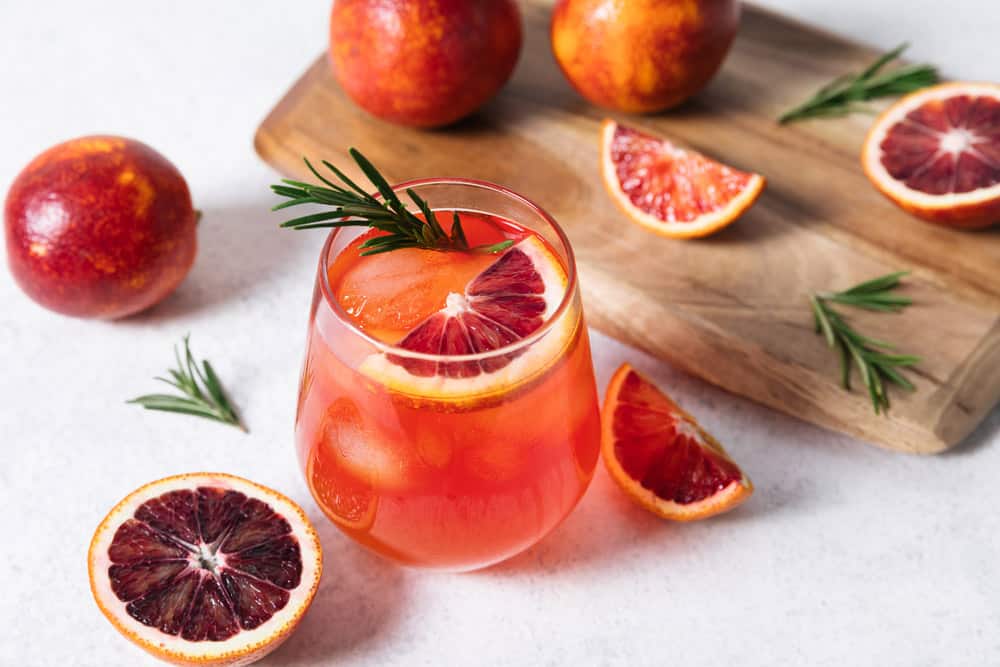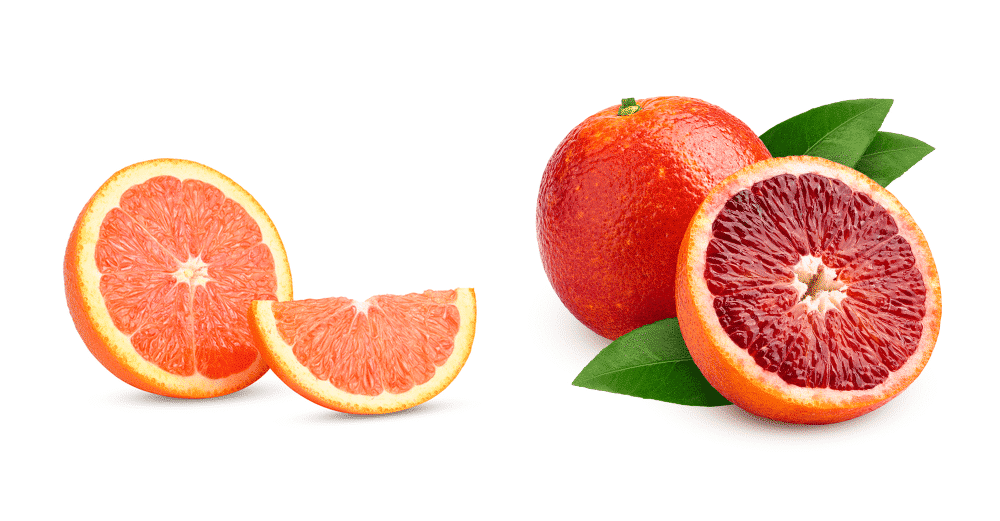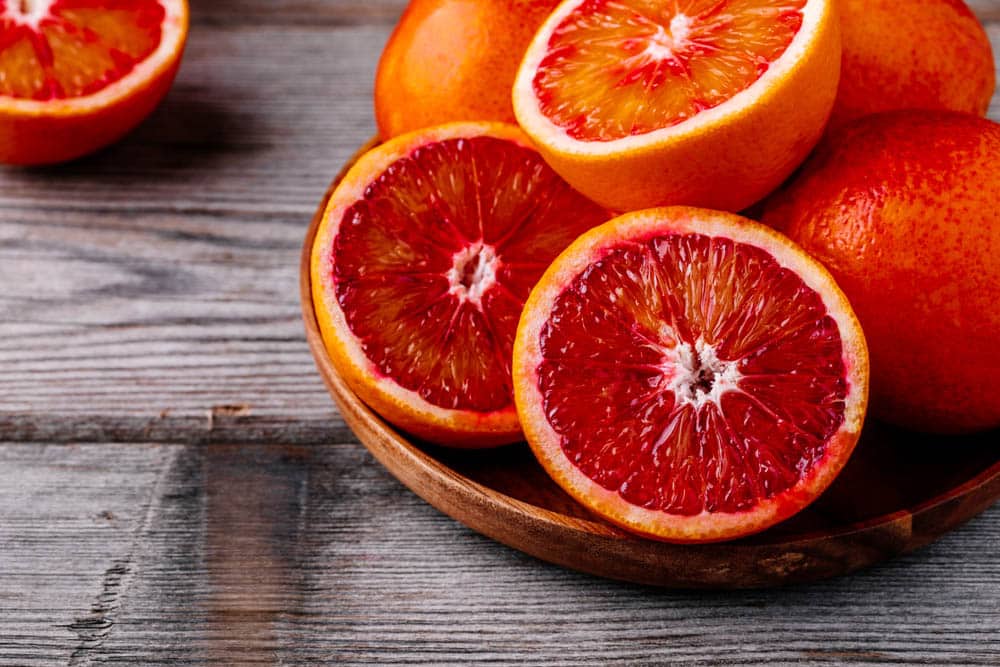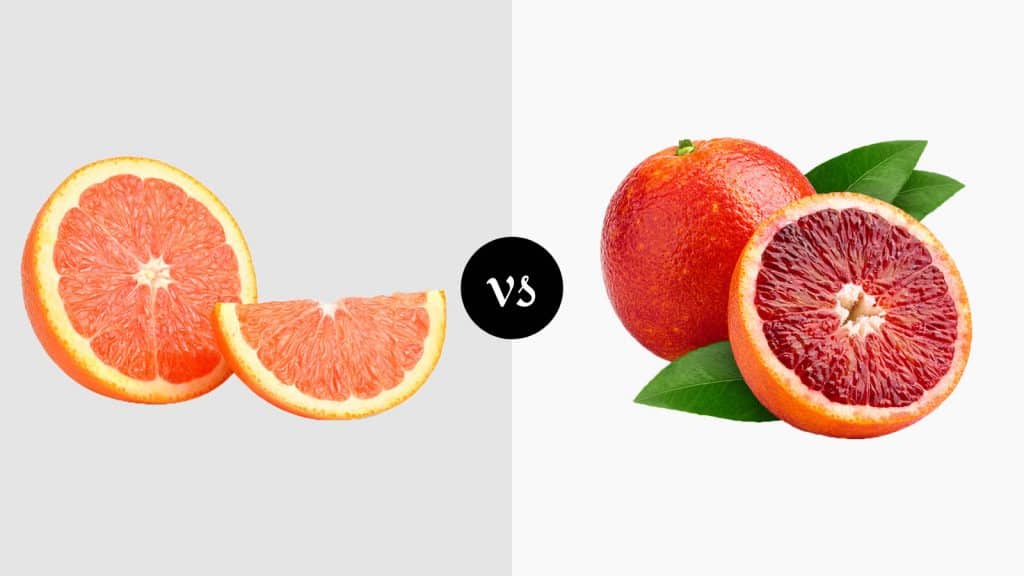
Oranges have always been a favorite citrus fruit for their sweet and slightly sour flavor. However, there is not only one type of orange out there, but instead a multitude of tasty options.
We’re taking you through a look at Cara Cara vs. blood oranges, two of the most popular varieties out there.
Cara Cara Vs. Blood Oranges Comparison
| Cara Cara Oranges | Blood Oranges | |
|---|---|---|
| Names | Cara Cara Oranges, Cara Cara Navels, Red-Fleshed Navels, Power Oranges, Pink Oranges | Blood Oranges, Moros, Taroccos, Sanguinello |
| Origin | Valencia, Venezuela In 1976 - Washing Navel Mutation | South Mediterranean Origin - Often Credited To Sicily |
| Coloring | Yellow-Orange Hued Skin With Light Pinkish-Red Flesh | Yellow-Orange Skin With Red Hues, Dark Red Flesh Deepening To Maroon And Black Shades |
| Size | 2.5-Inches To 4-Inches Diameter Average | 1.9-Inches To 2.75-Inches Diameter Average |
| Flavor | Sweet Low Acidity Citrus With Rose Petal, Cherry & Blackberry Flavor Note | Sweet Low Acidity Citrus With Tart Sweetness And Raspberry Flavor Notes |
| Consistency | Plump Juicy Vesicles | Bright Red Firm Flesh With Hard Juicy Vesicles That Are Slightly Smaller Than Blood Orange Vesicles |
| Availability | November To April Availability In The US | December To April Availability In The US |
| Nutrients | 19 Grams Carbs, 3 Grams Fiber, 80 Calories, High In Lycopene Antioxidant, 20% More Vitamin C & Vitamin A Than Blood Oranges/Other Navels | 45 Calories, 0.65 Grams Protein, 9.74 Grams Carbohydrates, 1.9 Grams Fiber, 0.42 Grams Fat, 26 Milligrams Calcium, 0.19 Milligrams Iron, 169 Mg Potassium, 52.3 Milligrams Vitamin C |
| Best Uses | Consumed Fresh, Juiced, Frequently Featured In Fresh Food Like Salsa, Salads, Fruit Salads, Excellent In Sauces/Marinades, Popular In Cocktails | All-Purpose Versatility But Best Suited To Baking & Cocktails |
| Affordability | $3-$4 Per Pound | $6-$8 Per Pound |
Cara Cara Vs. Blood Oranges
They may look the same, but they don’t taste the same. Here is a breakdown of all the key characteristics of Cara Cara and blood oranges, as well as how they compare to each other.
Cara Cara
Whether enjoyed fresh or juiced, Cara Cara oranges are a favorite thanks to their uniquely sweet flavor and low acidity that makes them endlessly versatile and an ingredient that stands out among others.
Let’s take a closer look at Cara Cara oranges and what makes them such a special variety of navels.
Names
Cara cara are also known as red-fleshed navel oranges or Cara Cara navels and are fondly known as the cousin of blood oranges. They are also often marketed as power oranges or pink oranges. The correct way to pronounce this tasty low-acidity summer favorite is ‘keh-rah keh-rah.’
Origin
Cara cara oranges originated in Valencia, Venezuela, in 1976 as a mutation of the Washington navel orange tree. The mutation was not bred but instead rather occurred spontaneously.
It was only in the late eighties that Cara Cara oranges entered the US fruit and vegetable market for the first time.
Coloring
You’ll recognize Cara Cara by the yellow and orange hues of its skin, but the internal flesh has light flesh with pinkish-red color. For the most part, the flesh looks like grapefruit.
Size
The average Cara Cara orange measures six to ten centimeters in diameter.
Flavor
Cara cara has undertones of rose petal, cherry, and blackberry. These medium-sized navels are known for their sweet flavor and low acid content. Cara cara has a complex flavor as compared to other varieties of navel oranges.
Don’t let the red flesh fool you into thinking Cara Cara is anything but sweet. Despite the flesh resembling a grapefruit, there is no similarity in taste at all.
Consistency
The inside of a Cara Cara orange resembles any other navel, just with red-pink flesh that arises from containing a high concentration of the potent antioxidant lycopene. You’ll find that each carpel is filled with plump juice-filled vesicles, offering far greater juiciness than most other oranges.
Availability
Cara cara fruit comes around in October but is available from November to April in California.
Nutrients
The consumption of Cara Cara helps improve heart health and improves macular degeneration. One medium Cara Cara orange supplies 19 grams of carbs and 3 grams of fiber at the cost of 80 calories.
They’re also an excellent source of the antioxidant lycopene and are also high in Vitamin A, Vitamin C, and folate. Cara cara actually has twenty percent more Vitamin C and thirty percent more Vitamin A than blood oranges.
Best Uses
Cara cara can be used for making juice, but you can also slice the flesh for eating it as a snack. Some people also add them to smoothies to fortify the flavor and health benefits. Cara cara makes a perfect citrus curd and can add a pop of color and flavor to dressings and salads.
It’s the ideal flavor addition for salsa, fruit salads, greens, and fish marinade. If you are a fan of cocktails, it’s perfect for cocktails and complements rose wine. In addition, you can dip the Cara Cara slices in chocolate fondue to make a delicious yet nutritious snack.
Affordability
Fresh Cara Cara oranges are generally found much cheaper when you purchase them from a market. However, online Cara Cara oranges retail for around $3.5 to $4 per pound.
Blood Oranges
Tasty blood oranges are, for the most part, grown in Spain, Italy, and California. The most intriguing part is that these oranges won’t ripen once they are plucked from the tree.
Each orange has to be picked at the perfect point of color and ripeness to reward with an intense sweet flavor. Here is a breakdown of blood oranges and what makes them such a popular choice.
Names
There are three main varieties of blood oranges. You’ll find moros to be the brightest and sweetest with a tart flavor. Taroccos are slightly less bright and not as sweet as moros. Finally, Sanguinello is smaller than other varieties and boldly sweet.
Origin
Blood oranges are of south Mediterranean origin. Most scholars pin the origin of blood ranges to somewhere between the 9th and 10th centuries when Siciliy was under the Arabian rule.
Sicily is largely credited to be one of the points of origin for blood oranges, and blood oranges are also one of the region’s top crops.
Coloring
As the name suggests, these oranges have a dark red color that occurs due to high concentrations of anthocyanins, which are powerful antioxidants.
Size
Blood oranges don’t typically get bigger than medium-sized navels. Each blood orange has a diameter of between 1.9 and 2.75-inches.
Flavor
Blood oranges taste similar to navels, just with lower acidity, more sweetness, and a greater depth of flavor. The sweetness is tart with an aftertaste that some compare to berries like raspberry.
Consistency
The inside of a blood orange resembles any other orange, just with bright red flesh. You’ll find that each of the blood orange carpels is filled with firm juice-filled vesicles that are slightly harder and smaller than Cara Cara vesicles but remain equally as juicy once juiced or consumed.
The flesh is just firmer than other navels.
Availability
You’ll find blood oranges in season in the US between December to April. Moros are the variety that are most common in America.
Nutrients
A single serving of 100 grams of blood orange (roughly equivalent to one orange) contains 45 calories, 0.65 grams of protein, 9.74 grams of carbohydrates, 1.9 grams of fiber, 0.42 grams of fat, 26 milligrams of calcium, 0.19 milligrams of iron, 169 mg of potassium, and a whopping 52.3 milligrams of Vitamin C – that’s so much vitamin C that one orange fulfills the daily value recommended.
Furthermore, studies show that regular consumption of blood orange and blood orange juice inhibits fat accumulation while also promoting a stronger immune system and better general skin health.
Best Uses
While filled with zesty flavor that’s excellent as-is consumed fresh, blood oranges are treasured by bakers. The potent low-acidity citrus taste is ideal for cakes, desserts, salads, and making drinks.
From blood orange margaritas to simpler mixes like blood orange gin and tonic, there are tons of cocktails where the unique sweet taste shines.
Affordability
Blood oranges, like Cara Cara, are much cheaper when bought at a fresh fruit and vegetable market. This being said, one can generally find blood oranges for around $6 to $8 per pound online. They’re up to double the price of Cara Cara oranges.
What Is the Difference Between Cara Cara Vs. Blood Oranges?
The main difference between Cara Cara and blood oranges is that blood oranges have deep red-colored fresh ranging from red hues to maroon so dark that it approaches black, whereas Cara Cara oranges have vividly pink flesh.
Both are high in antioxidants, but Cara Cara oxidants have more vitamins C & A.
Which Is Best Between Cara Cara Vs. Blood Oranges?
If you’re battling to choose between the two, keep in mind that blood oranges can be stored for slightly longer than Cara Cara. The thick peels of blood oranges reduce the risk of rotting and molding. However, there’s nothing quite like the unique ultra-low acidity of a Cara Cara orange.
They’re not as sweet as a blood orange that’s been left to mature for a long period of time, but the taste is something of its own. Either variety can be juiced and the peel zested. Just make sure you freeze the zest so that it doesn’t lose flavor.
Always remember just how high the peel of both Cara Cara and blood oranges is in antioxidants, so take care to save it. Some companies even use the peel of blood oranges especially for making oils as it is so rich in aroma.
This translates to unbeatable flavor in your cooking dishes and cocktails.
